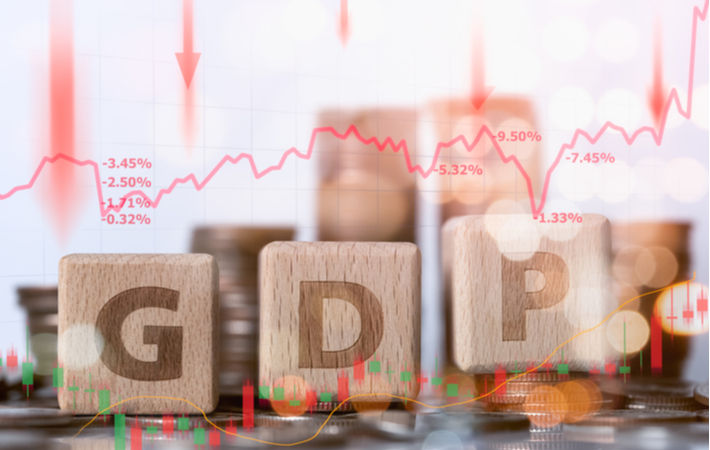Various independent estimates of India’s gross domestic product (GDP) growth in fiscal 2021-22 range between 8.7 per cent and 9.6 per cent, which are below the Reserve Bank of India’s projection of 10.5 per cent and the estimate of 11 per cent by chief economic adviser (CEA) KV Subramanian, who does not foresee a very high impact of the pandemic’s second wave on the economy.
While Confederation of Indian Industry president TV Narendran pegged India’s GDP growth rate for this fiscal at 9.5 per cent, Motilal Oswal Financial Services projected a real GDP growth of 8.7 per cent, down from 11.1 per cent it had forecast earlier. The later, however, revised up the forecast for fiscal 2022-23 from 4 per cent to 5.4 per cent.Various estimates of India's gross domestic product growth in fiscal 2021-22 range between 8.7 per cent and 9.5 per cent, which are below the Reserve Bank of India's projection of 10.5 per cent and the estimate of 11 per cent by chief economic adviser KV Subramanian, who does not foresee a very high impact of the pandemic's second wave on the economy.#
Given the speed and scale of the second wave, the GDP growth estimated earlier by India Ratings and Research (Ind-Ra) at 10.1 per cent for this fiscal is unlikely to hold. Ind-Ra now expects the figure to come in at 9.6 per cent (base case). This, however, depends on India vaccinating its entire adult population by December end.
According to rating agency ICRA, economic recovery in the country gained momentum after localised lockdowns were lifted following the second wave, but is 'incomplete'.
Care Ratings projected the growth at 8.8-9 per cent this fiscal, driven by agriculture and industry sectors. The outlook for the economy on almost all counts in this fiscal would look seemingly better than the last on account of the negative base effect, it said. The country's economy had contracted by 7.3 per cent in the last fiscal.
The services sector cannot reach its potential even at 8.2 per cent growth as the second lockdown has affected sectors like hotels and restaurants, tourism, retail malls and entertainment in particular, Care Ratings further said.
The International Monetary Fund (IMF) cut India's GDP growth to 9.5 per cent for this fiscal from its previous estimate of 12.5 per cent, citing the impact of the pandemic’s second wave. For the next fiscal, however, IMF has raised the growth projection to 8.5 per cent from 6.9 per cent.
RBI governor Shaktikanta Das said there was no reason to revise the central bank’s projection downwards.
The Economic Survey 2020-21, released in January this year, had said GDP growth will be supported by supply-side push from reforms and easing of regulations, push for infrastructural investments, boost to manufacturing sector through the production-linked incentive schemes, recovery of pent-up demand, increase in discretionary consumption subsequent to rollout of vaccines and pick up in credit given adequate liquidity and low interest rates.
Fibre2Fashion News Desk (DS)
